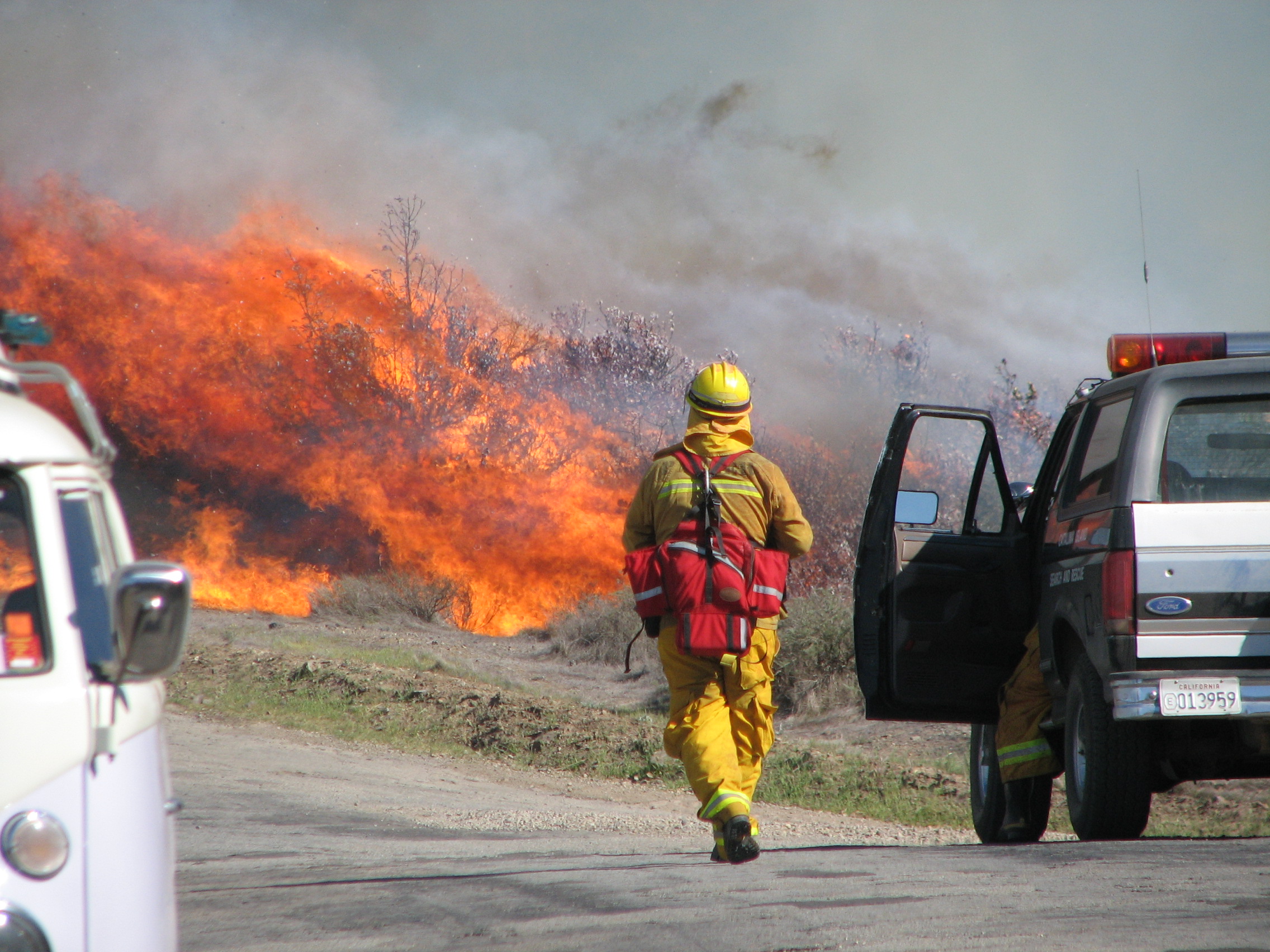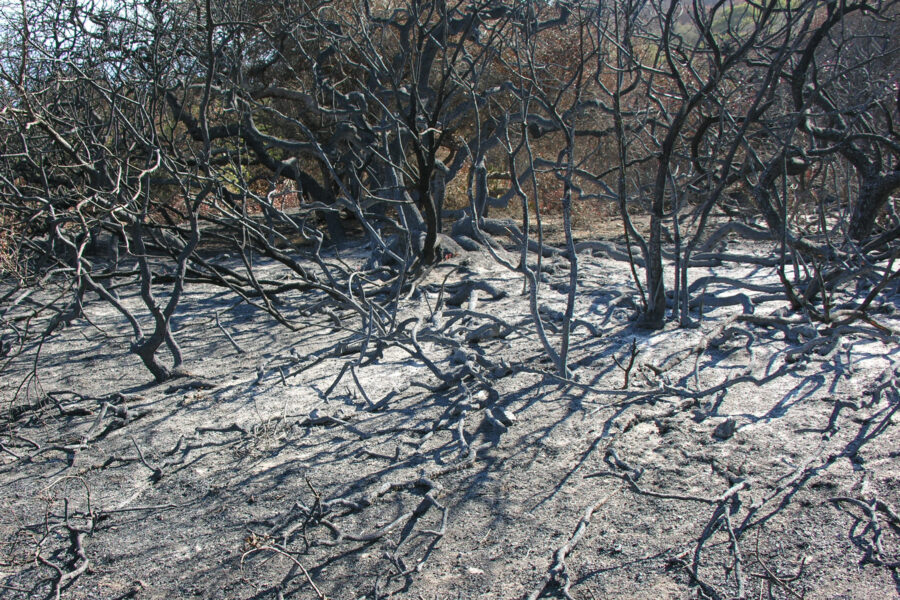
A firefighter rushes to the flames during the 2007 Island Fire near Avalon, CA.
We will soon be entering peak fire season in Southern California. But as we saw with the devastating Los Angeles wildfires in January 2025, wildfire season is every season.
Though wildfires have long played a natural role in California’s ecosystems, today’s fires are becoming more intense and frequent due to the combined effects of climate change, invasive species and prolonged drought. Catalina Island is no exception.
Cal Fire, California’s state fire department and resource management agency, currently classifies the Island as a “very high” fire hazard severity zone. Several key factors contribute to this elevated risk:
- Invasive Species – Non-native grasses, such as ripgut brome and oats, now cover an estimated 35% of the Island. These plants grow quickly in areas where native vegetation has been lost. Known as “one-hour fuels”, these grasses dry out and burn quickly, allowing fires to easily ignite and spread rapidly.
- Prolonged Drought and Rising Temperatures – Since the 1980s, California has experienced a steady rise in average temperatures. Reduced soil moisture and dry vegetation create more flammable conditions.
- Santa Ana Wind Events – These powerful winds, common on Catalina, have been shown to increase wildfire spread by as much as 60%, especially when combined with dry plant material.
- Decline in Native Plant Communities – The Island’s natural plant cover, which once served as a fire-resilient barrier, has been impacted through overgrazing over the decades, first by cattle, pigs and goats, and most recently from invasive mule deer. In place of these native plants, invasive grasses thrive, further increasing fire vulnerability.
Recent wildfires, such as those in Palisades and Altadena on the mainland, serve as a stark reminder of how quickly wind-driven fires can escalate in dry and steep terrain.
The Catalina Island Conservancy is addressing these challenges with short-term tactics in coordination with fire and county officials. At the same time, it’s working to build long-term resiliency through the Catalina Island Restoration Project, a comprehensive, science-based initiative focused on native plant restoration that will help lead to a more fire-resilient landscape.

